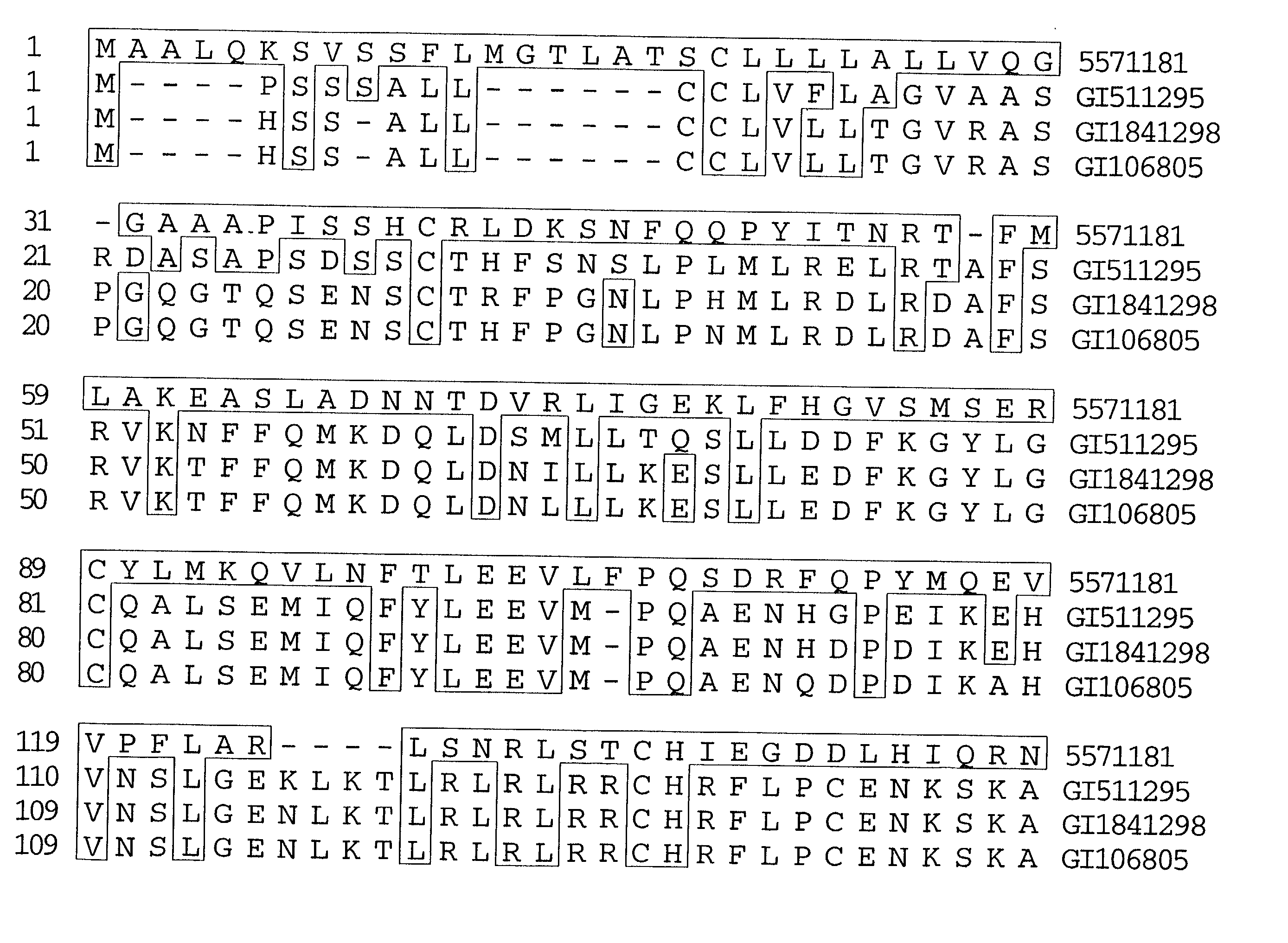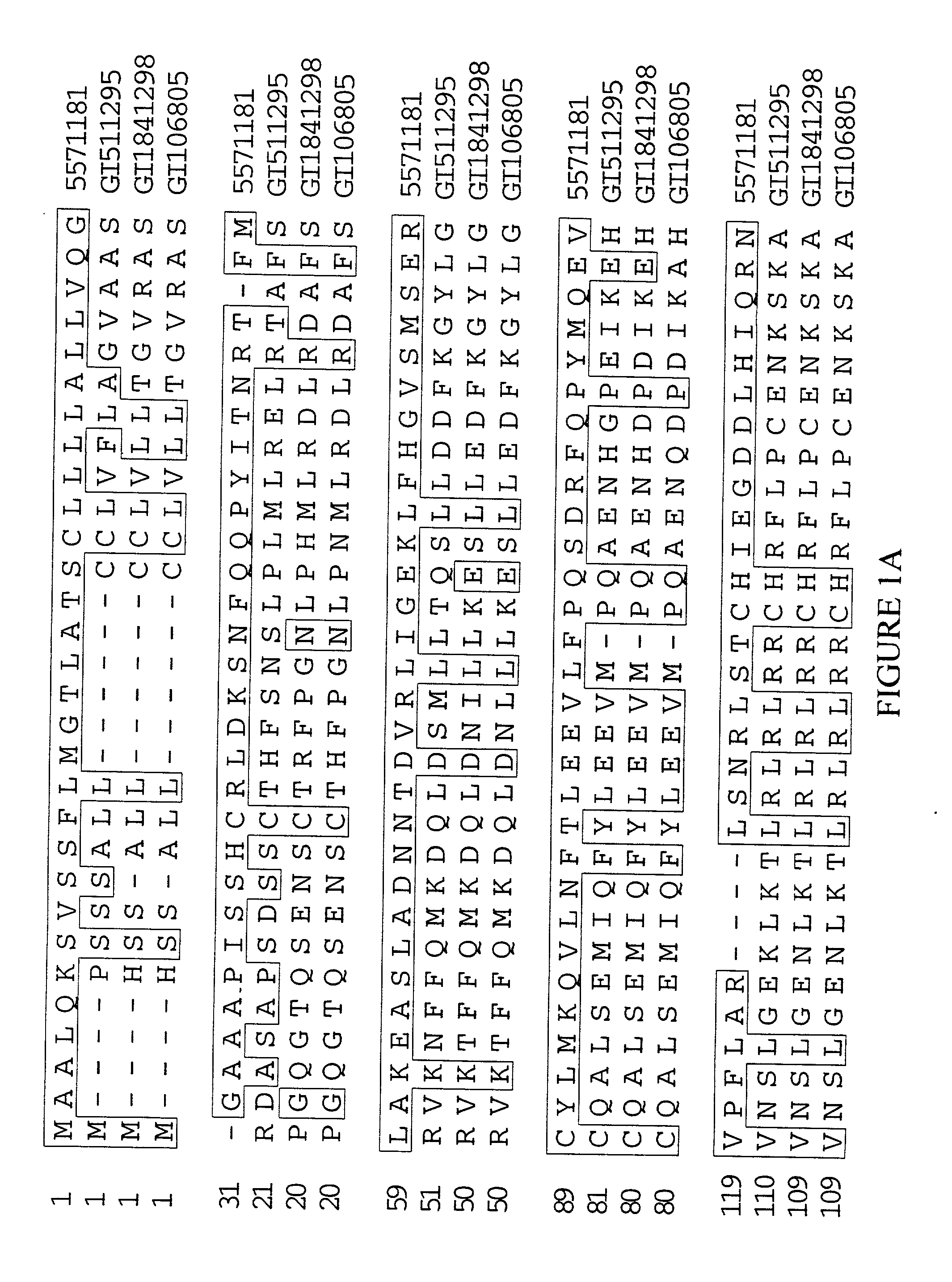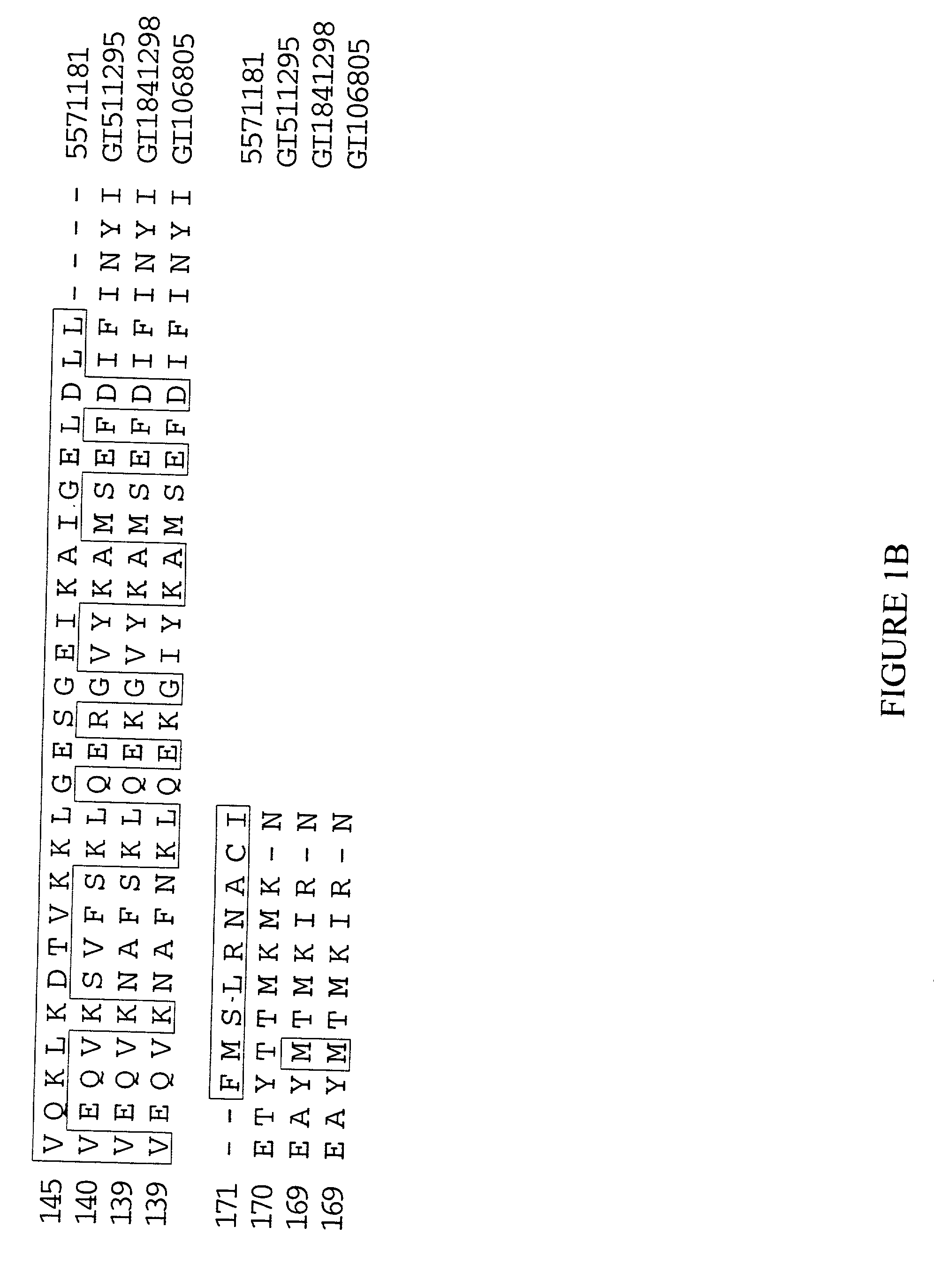[0151] The nucleotides of the present invention may be subjected to
DNA shuffling techniques such as MOLECULARBREEDING (Maxygen Inc., Santa Clara Calif.; described in U.S. Pat. No. 5,837,458; Chang, C.-C. et al. (1999) Nat. Biotechnol. 17:793-797; Christians, F. C. et al. (1999) Nat. Biotechnol. 17:259-264; and Crameri, A. et al. (1996) Nat. Biotechnol. 14:315-319) to alter or improve the biological properties of EXCS, such as its biological or enzymatic activity or its ability to bind to other molecules or compounds.
DNA shuffling is a process by which a
library of
gene variants is produced using PCR-mediated recombination of
gene fragments. The
library is then subjected to selection or
screening procedures that identify those
gene variants with the desired properties. These preferred variants may then be pooled and further subjected to recursive rounds of
DNA shuffling and selection / screening. Thus,
genetic diversity is created through "artificial" breeding and rapid
molecular evolution. For example, fragments of a
single gene containing random point mutations may be recombined, screened, and then reshuffled until the desired properties are optimized. Alternatively, fragments of a given gene may be recombined with fragments of homologous genes in the same
gene family, either from the same or different species, thereby maximizing the
genetic diversity of multiple naturally occurring genes in a directed and controllable manner.
[0154] In order to express a biologically active EXCS, the
nucleotide sequences encoding EXCS or derivatives thereof may be inserted into an appropriate
expression vector, i.e., a vector which contains the necessary elements for transcriptional and translational control of the inserted coding sequence in a suitable host. These elements include regulatory sequences, such as enhancers, constitutive and
inducible promoters, and 5' and 3' untranslated regions in the vector and in
polynucleotide sequences encoding EXCS. Such elements may vary in their strength and specificity. Specific
initiation signals may also be used to achieve more efficient translation of sequences encoding EXCS. Such signals include the ATG
initiation codon and adjacent sequences, e.g. the Kozak sequence. In cases where sequences encoding EXCS and its
initiation codon and upstream regulatory sequences are inserted into the appropriate
expression vector, no additional transcriptional or translational control signals may be needed. However, in cases where only coding sequence, or a fragment thereof, is inserted, exogenous translational control signals including an in-frame ATG initiation codon should be provided by the vector. Exogenous translational elements and initiation codons may be of various origins, both natural and synthetic. The efficiency of expression may be enhanced by the inclusion of enhancers appropriate for the particular host
cell system used. (See, e.g., Scharf, D. et al. (1994) Results Probl.
Cell Differ. 20:125-162.)
[0162] For long term production of recombinant proteins in mammalian systems, stable expression of EXCS in cell lines is preferred. For example, sequences encoding EXCS can be transformed into cell lines using expression vectors which may contain viral origins of replication and / or endogenous expression elements and a
selectable marker gene on the same or on a separate vector. Following the introduction of the vector, cells may be allowed to grow for about 1 to 2 days in enriched media before being switched to selective media. The purpose of the
selectable marker is to confer resistance to a selective agent, and its presence allows growth and
recovery of cells which successfully express the introduced sequences. Resistant clones of stably transformed cells may be propagated using
tissue culture techniques appropriate to the
cell type.
[0180] In other embodiments, any of the proteins, antagonists, antibodies, agonists, complementary sequences, or vectors of the invention may be administered in combination with other appropriate therapeutic agents. Selection of the appropriate agents for use in
combination therapy may be made by one of ordinary skill in the art, according to conventional pharmaceutical principles. The combination of therapeutic agents may act synergistically to effect the treatment or prevention of the various disorders described above. Using this approach, one may be able to achieve therapeutic
efficacy with lower dosages of each agent, thus reducing the potential for adverse side effects.
[0195] Ribozymes, enzymatic
RNA molecules, may also be used to catalyze the specific cleavage of
RNA. The mechanism of
ribozyme action involves sequence-specific hybridization of the
ribozyme molecule to complementary target
RNA, followed by endonucleolytic cleavage. For example, engineered hammerhead motif
ribozyme molecules may specifically and efficiently catalyze endonucleolytic cleavage of sequences encoding EXCS.
[0228] With respect to
cancer, the presence of an abnormal amount of transcript (either under- or overexpressed) in biopsied tissue from an individual may indicate a predisposition for the development of the
disease, or may provide a means for detecting the
disease prior to the appearance of actual clinical symptoms. A more definitive diagnosis of this type may allow
health professionals to employ preventative measures or aggressive treatment earlier thereby preventing the development or further progression of the
cancer.
 Login to View More
Login to View More 


